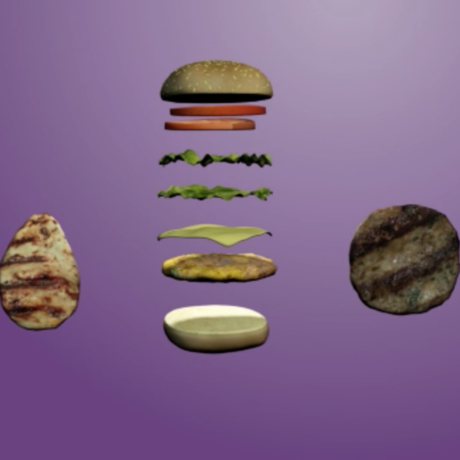Food, water, energy—we need solutions to the environmental issues of our day.
How do we assess the benefits and drawbacks of various solutions to a problem? To decide how one potential solution compares to another, we have to consider the pros and cons of each from many dimensions, including environmental, social, cultural, and economic.
In this activity, students will work together to map out the strengths and limitations of potential solutions to some important global food system issues. This lesson is part of a larger unit whereby students practice different steps in design thinking within the context of issues surrounding our global food system. In this exercise, students will practice comparing potential solutions in order to prepare for the culminating activity of the unit: a design thinking challenge.
- What are the advantages and disadvantages of different solutions that have been proposed for global food system issues we are facing in the world today?
- How do we assess the environmental, social, cultural, and economic benefits and drawbacks of various solutions to a problem?
- How do we ultimately decide what solution is the ‘best’?
Students will
- Explore some of the solutions being proposed for global food system issues like food waste, diets, land use, and food deserts.
- Learn how to evaluate and compare various solutions to a problem by mapping out the multidimensional strengths and weaknesses of each.

- Computer lab with one computer for every student (computers should have Internet access) and one computer that the instructor can project from
- One pair of audio headphones for each student
- Projector
- Five Flipside Science videos in the Our Hungry Planet unit
- Student Worksheets (1 per student, also available in Spanish, Simplified Chinese, and Traditional Chinese.)
- Supplementary readings (optional)
We recommend you progress through the Food for Thought, Exploring the Impacts of Feeding the World, and Rapid Brainstorming lessons before continuing with this one. You can also use this lesson independently.
Teacher note: If you preceded this activity with the Exploring the Impacts of Feeding the World and/or Rapid Brainstorming: How Can We Improve Our Global Food System activity, you can skip to Part II.
1. Hand out to students or write on the board a list of questions for them to think about while they watch the The Environmental Impact of Feeding the World video (see below).
2. Show students the video.
3. Ask student to jot down some of their thoughts about the questions that they were asked to consider while watching the video. Give them 5-10 minutes to do this. You might want to play the video another time through for students. Discuss these questions as a class after students have had a change to reflect individually.
- What kinds of food issues were raised in the video?
- What impacts does agriculture have on the environment?
- How is the American diet different from other diets around the world?
- Does everyone have the same food choices? What influences the types of foods a person has access to?
- What do you do with food on your plate that you don’t finish?
4. Ask students to choose one of the main global food issues introduced in the video to focus on (food waste, food deserts, land use, and diet) and to find a partner who chose the same issue. Note: To expedite this process or if you would like to ensure that all food issues are represented, you can also have students pick food issues out of a hat and pair up that way too.
1. Hand out one Student Worksheet to each student. Explain to students that they will be watching videos that will introduce them to some possible solutions that people have thought of for the issue on which they are focusing.
2. With their partners, students will guide themselves through the activity as outlined on their Student Worksheets. During this time, students will be asked to watch the Flipside Science food solution video for the problem they chose to focus on and to proceed through an exercise weighing the pros and cons of the solution(s) introduced in the videos. Remind students to wear headphones while watching the videos on their own computers. As they work, walk around the classroom and ask different groups to explain their thinking. Probe them to uncover environmental, social, cultural, or economic factors that relate to proposed solutions.
3. Remind students when they have 15 minutes and 5 minutes left in the activity.
Teacher tip: The solutions introduced in the Flipside Science videos are not the only solutions, nor necessarily the best solutions for the food issues they address. To help you facilitate students’ evaluations of these different solutions, we’ve created a Supplementary Materials document for each solutions video. Each document contains more information about the solutions outlined in the videos, as well as the pros and cons of these solutions. It is recommended you familiarize yourself with these materials before this activity.
1. Come back together as a class, and ask students to share out (in 1-2 minutes) the food issue they focused on and the pros and cons of the solutions they explored.
2. Ask students to reflect on their experience.
- Do we have one perfect solution for each of these issues? Why or why not? Do you think one exists?
- What steps can we take to try to develop the best solutions we can?
- What does it mean to consider the different ‘dimensions’ of a problem or solution? (E.g., economic, environmental, social, cultural, etc.)
- Why is it important for you (as young people) to think about these issues?
- Design for Change design thinking for students: Feel-Imagine-Do-Share
- NPR KQED Public Radio: To Cut Food Waste, Spain’s Solidarity Fridge Supplies Endless Leftovers
- NPR KQED Public Radio: Green Pie in the Sky? Vertical Farming is on the Rise in Newark
- California Academy of Sciences Science News: Bay Area Urban Farms
- California Academy of Sciences Science News video: Sustainable Family Farming
NGSS Disciplinary Core Ideas (Grades 6-8)
-
MS-ESS3.C: Human Impacts on Earth System
Science and Engineering Practices (Grades 6-8)
- Defining and Delimiting Engineering Problems
California's Environmental Principles and Concepts
- Principle I: Concept a
- Principle IV: Concept a
- Principle V: Concept a
Culminating Activity: Design a Solution
Challenge your students to apply their newly cultivated skills to design a solution to a sustainable food issue at home or school! Choose from a spectrum of challenges to find one that suits your available class time and resources.
To feed our growing world, we need innovative solutions. In this unit, we'll explore environmental issues related to the food we grow and eat. We'll review topics from food waste to urban farming, and learn how simple choices we make impact our planet.
Browse All Materials:
- Activity: Food for Thought
- Activity: Exploring the Impacts of Feeding the World
- Activity: Rapid Brainstorming: Improving Our Global Food System
- Activity: Sustainable Food Solutions: Weighing the Pros and Cons [you are here]
- Video: Urban Farming
- Video: Vertical Farming
- Video: Reducing Food Waste
- Video: Think Before You Eat
- Activity: Our Hungry Planet: Design Thinking Challenge [up next!]
- Supplemental video: What's Up With Your Gut Microbiome?
- Supplemental video: Why Protect Pollinators?
- Supplemental video: Bugs for Breakfast
